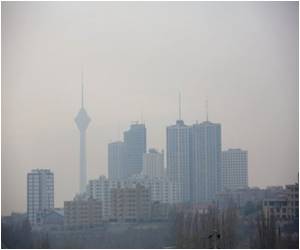Even plants can be indirectly affected by noise pollution if herbivorous or rodents that disperse plant seeds alter their behaviour or location.

‘Animals use sounds for many essential life functions such as predator avoidance, navigation, finding food, making attraction and maintenance of social groups, so not being able to hear the sounds have serious consequences.’





To quantify the extent of noise pollution in protected areas designed to be safe havens for biodiversity, researchers at Colorado State University and the US National Park Service recorded sounds at 492 sites in the US. A computer algorithm was used to establish a baseline or natural sound level for the various areas, given each's unique geospatial features.
It turned out that background noise exceeded three decibels (dB) in 63 percent of protected areas, and 10 dB in 21 percent of protected areas.
This meant a doubling and ten-fold increase in background noise, respectively, in these locations, according to the study published this week in the US journal Science.
In other words, noise reduced the area that natural sounds can be heard by 50 to 90 percent.
Advertisement
Noise pollution can have a profound effect on wildlife, she said.
Advertisement
"For example, birds may have a harder time finding a mate, or a prey species may not be able to hear the approach of a predator and be more likely to be eaten."
Even plants can also be indirectly affected by noise pollution if herbivorous or rodents that disperse plant seeds alter their behaviour or location because of the sound disturbance.
"Even if only one species is actually being affected by noise directly, these impacts may cascade through an ecological community," she said.
The study also revealed that high noise pollution levels within protected areas were in specific locations, where noise reduction techniques may best be targeted.
The biggest noise-causing culprits were roads, aircraft, human development, and resource extraction, it said.
Currently, protected areas cover 14 per cent of the land mass in the US.
"Next time you go for a walk in the woods, pay attention to the sounds you hear -- the flow of a river, wind through the trees, singing birds, bugling elk. These acoustic resources are just as magnificent as visual ones, and deserve our protection," said Buxton.
Source-IANS











